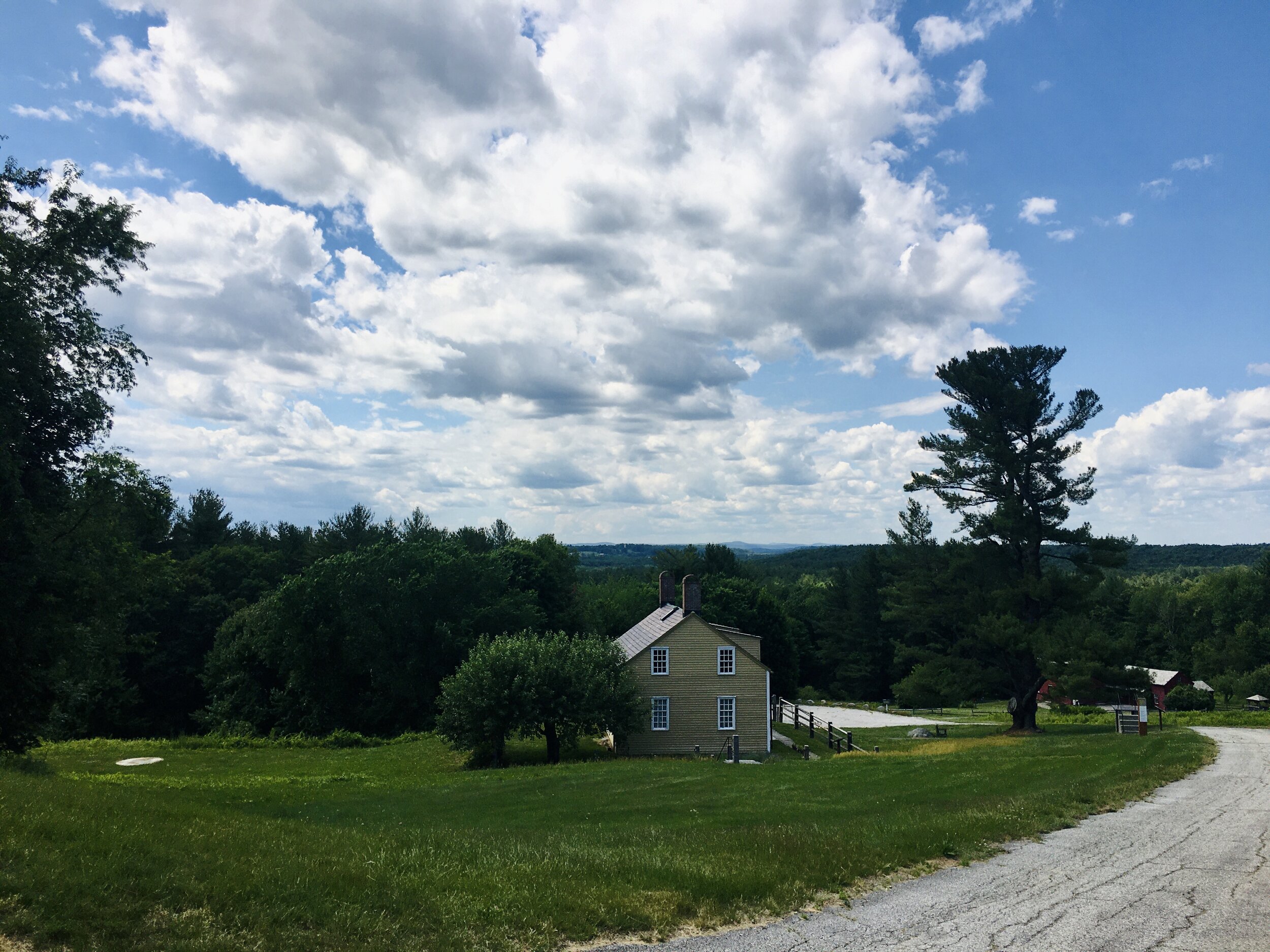Now that life is back to normal—or something closer to normal—here in Massachusetts, I find myself wanting to get out and explore new places, and revel in the freedom of wandering about mask-free (I’m fully vaccinated). Ours is a small state, but so rich in art, culture, history, and natural beauty that you can live here a long time (for me, 25 years) and never exhaust the possibilities.
One of my first post-COVID explorations was a day at the Fruitlands Museum in Harvard, Massachusetts. Though the name suggests otherwise, the Fruitlands is not an orchard but a former Transcendentalist farm founded in the 19th century by Charles Lane and Amos Bronson Alcott (father of Louisa May Alcott, author of Little Women). Their experiment in subsistence farming lasted less than a year, though, and in the early 20th century the property was opened to the public. Today it includes the original farmhouse, a Shaker House, a Native American Museum, an Art Museum, and a network of trails criss-crossing a varied landscape of more than 200 acres.
View of the farmhouse at the Fruitlands Museum
Trail head at the Fruitlands Museum
My sister Betsey and I met up at the Fruitlands primarily to see the exhibition Piecework: Resistance and Healing in Contemporary Textile Art. But after a nice lunch on an outdoor terrace at the cafe, we decided to explore some of the trails first. I highly recommend them! There’s a nice mix of mown paths traversing wide-open meadows and shady woodland trails, with remnants of a farm along the way. You can walk a lot or a little, depending on your energy or the weather. Having discovered that this beautiful place is just a little more than an hour from home, I will definitely be going back to further explore the trails. (It’s sure to be gorgeous during fall.)
At one point, we rested on a bench near this old tree and contemplated its life. It’s lost one large branch on this side, and on the other side it looks like it’s been hit by lighting or lost more branches to bad weather (like the famously tree-damaging heavy snows we get). This tree is another reason I must go back and bring my sketchbook. I would like to draw it both close up and from a distance—it has a curiously flat top (the tree is to the right of the Shaker House in the photo below).
The Piecework exhibition did not disappoint. The contemporary artists in the show “build upon the traditional mediums of needlework and quilting to offer constructive responses to the topics of Indigenous land rights; the representation of Black people, by Black people; capitalism; and environmentalism, respectively.” There’s much to see and learn; we spent quite a bit of time with the work. I was especially intrigued by the self-portraits embroidered with hair by Leslie Schomp.
The Art Museum also had many historical textiles on display, everything from handmade rag dolls to embroidery samplers (I loved the sheep cleverly rendered with French knots). We were unable to visit the Shaker House, as it wasn’t yet open for the season. So there’s another reason to go back!
Rag doll (likely owned by the Alcott sisters) and stuffed bunny (possibly Shaker)
French-knot sheep
Patchwork segment (1860–1910)
If you visit, be sure to pick up a copy of Art + Nature: An Exploration Journal (it’s available for free). This little book juxtaposes creativity prompts with quotations and sketchbook images by Massachusetts artist Polly Thayer Starr. There are plenty of blank pages for your own sketches, poetry, or journaling.
We ended our day sitting alongside a refreshing fountain, enjoying the breeze and the views the spot afforded of a incredibly peaceful landscape. I knit a bit on a sock and continued to regret not bringing my little red landscape sketchbook. Well, I’ll just have to go back and be sure to bring it with me. I have a feeling I’ll be revisiting the Fruitlands Museum often!























